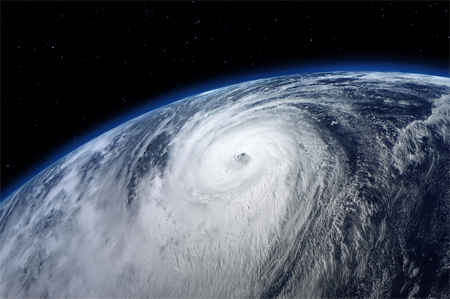PHYSICS
Chinese built 25 km high-resolution climate model reproduces tropical cyclone activities better
Tropical cyclones are extreme weather phenomena featured with intense wind speeds and heavy rainfall, causing severe economic losses and human casualties. 
A tropical cyclone has become more intense and frequent under the background of global warming. However, there are still challenges in accurately simulating and predicting tropical cyclone activities.
Researchers from the Institute of Atmospheric Physics (IAP) of the Chinese Academy of Sciences (CAS) have developed a new generation global climate system model of LASG named CAS FGOALS-f3-H. This 25 km high-resolution climate system model can simulate the global TC activities in finer ways, capturing and reproducing more realistic features of TC activities.
The study was published in Geoscientific Model Development on Oct. 12.
Based on the FGOALS-f3 simulation in the low resolution (CAS FGOALS-f3-L, the horizontal resolution is about 100 km) and the high resolution (CAS FGOALS-f3-H, the average horizontal resolution is about 25 km), they quantitatively evaluated the impact of the horizontal resolution of the FGOALS-f3 on tropical cyclone simulation capabilities and analyzed the possible causes.
"We found that FGOALS-f3 can resolve tropical cyclone activities in both high- and low-resolution conditions, and has outstanding performance in terms of the number, generating positions, tracks, and life cycles of global tropical cyclones," said Dr. LI Jinxiao, the first author of the study. The tropical cyclone horizontal structure became clear when the horizontal resolution was increased from 100 km to 25 km.
The researchers also found that the fidelity of the tropical cyclone genesis potential index was improved when the models' horizontal resolution increased. Further analyses revealed the possible physical linkage between the performance of the tropical cyclone simulation and the horizontal resolution.
"By comparison, the FGOALS-f3-H shows excellent performance in depicting the global tropical cyclone activities. We intend to establish a high-resolution coupled dynamic prediction system based on FGOALS-f3-H to improve the prediction skill of tropical cyclones on sub-seasonal to seasonal scales," said Prof. BAO Qing, the corresponding author of the study.
